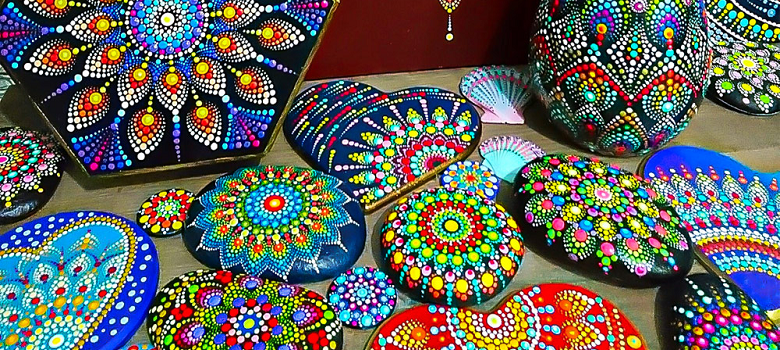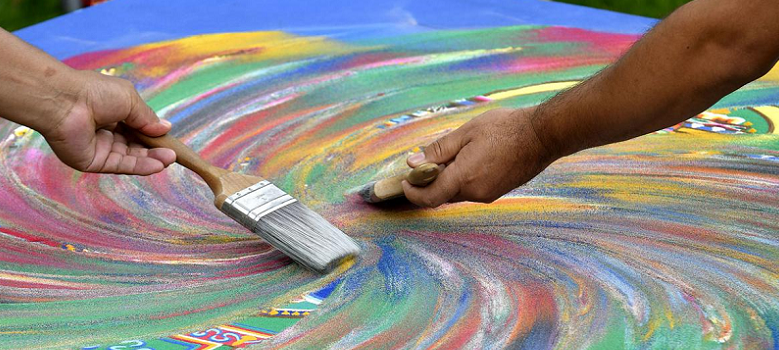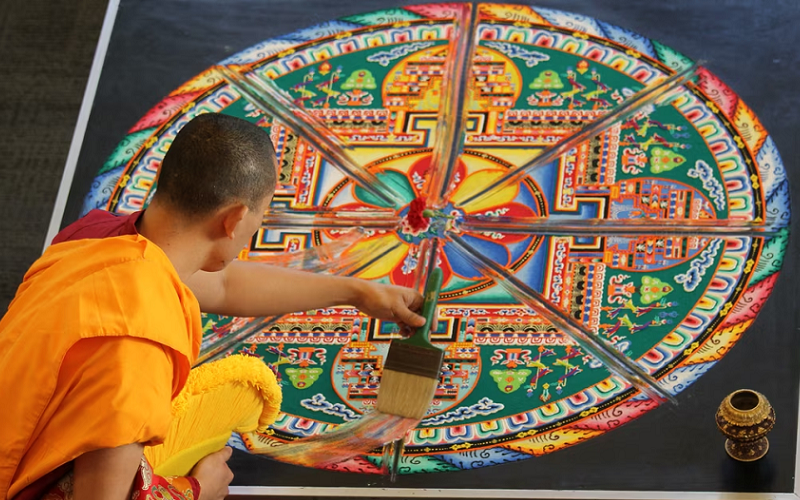Mandalas have been a part of various cultures and religions for centuries, serving as a symbol of the universe and as a tool for meditation and self-discovery. Originating in Hinduism and Buddhism, mandalas have since been incorporated into Tibetan Buddhism, Native American culture, and even modern-day art therapy.
What Are Mandalas?
Mandalas are geometric designs that serve as a representation of the universe in Hinduism and Buddhism. They are often used in meditation and spiritual practices as a way to promote balance, harmony, and inner peace. Mandalas can take many forms, ranging from simple circular patterns to complex, multi-layered designs, and they can be created through a variety of mediums, including sand, paint, or colored pencils.
Mandalas can also be used as a form of art therapy, with the act of creating or coloring a mandala being used as a way to reduce stress, improve mindfulness, and facilitate self-discovery. Mandalas hold deep cultural and religious significance and have been used for thousands of years as a tool for spiritual growth and personal transformation.
Cultural Significance of Mandalas
The cultural significance of mandalas varies greatly across different cultures and traditions. In Hinduism and Buddhism, mandalas are often used as a tool for meditation and as a visual representation of the universe, with each element within the mandala symbolizing a different aspect of the divine. Mandalas also play an important role in Tibetan Buddhism, where they are used in various rituals and ceremonies and are sometimes painted on the walls of temples and monasteries.
In Native American culture, mandalas can take the form of sand paintings and are used in spiritual healing ceremonies. The creation of the sand painting is often seen as a symbolic journey, with each grain of sand representing a step towards enlightenment.
Regardless of their specific cultural origins, mandalas are widely recognized as symbols of balance and harmony. By looking at a mandala, one can see the harmonious balance of its elements and be inspired to strive for balance and harmony in one’s own life. Creating or coloring a mandala can be a form of mindfulness, helping individuals to stay present in the moment and connect with their inner selves.
The cultural significance of mandalas is vast and diverse, with these beautiful geometric designs serving as powerful symbols of the universe and as tools for spiritual growth and personal transformation across a range of cultures and traditions.

Religious Significance of Mandalas
Mandalas hold great religious significance in Hinduism and Buddhism, where they are often used as a visual representation of the universe and as a tool for meditation and spiritual growth. In these traditions, each element within a mandala symbolizes a different aspect of the divine, and the act of creating or contemplating a mandala is seen as a way to connect with the divine and achieve inner peace.
In Tibetan Buddhism, mandalas play an important role in spiritual rituals and ceremonies, with the intricate designs serving as a way to visualize the path to enlightenment and as a reminder of the impermanence of all things. Mandalas are also used in meditation practices, with individuals focusing on the design as a way to quiet the mind and achieve a state of inner peace.
In addition to their role in meditation and spiritual practices, mandalas are also seen as symbols of balance and harmony. The geometric designs and intricate patterns of mandalas can evoke feelings of serenity and peace, and they serve as reminders of the interconnectedness of all things and the importance of finding balance in our lives.

The Healing Power of Mandalas
The healing power of mandalas lies in their ability to promote mindfulness, reduce stress, and facilitate self-discovery. The act of creating or coloring a mandala can be a form of meditation, helping individuals to quiet their minds, stay present in the moment, and connect with their inner selves. This mindfulness can have a profound impact on mental health, reducing symptoms of anxiety and depression and improving overall well-being.
Mandalas can also serve as a form of art therapy, with the act of creating or coloring a mandala being used as a way to process emotions and facilitate self-expression. By focusing on the mandala, individuals can allow their thoughts and feelings to flow freely, and in doing so, they can gain a deeper understanding of themselves and their experiences.
In addition to its benefits for mental health, coloring mandalas can also have a calming effect, reducing stress and promoting relaxation. This is due in part to the repetitive nature of coloring within the lines, which can be soothing and grounding, and also to the act of focusing on a single task, which can help to clear the mind and reduce stress.

A Summary of Interesting Facts About Mandalas
Mandalas are fascinating and complex designs that have been used for thousands of years as a tool for spiritual growth and personal transformation, and they continue to hold much mystery and significance in many cultures and traditions.
- Mandalas have been used for thousands of years, with the oldest known examples dating back to ancient India and China.
- Mandalas can have different meanings in different cultures, with some cultures using them as symbols of the universe, while others use them as representations of the self.
- The creation of mandalas is often a spiritual practice, with the act of drawing or coloring the design being seen as a way to quiet the mind and connect with the divine.
- Mandalas can be created using a variety of mediums, including sand, paint, colored pencils, and even flowers and seeds.
- The geometric designs in mandalas can have mathematical significance, with some mandalas being based on the golden ratio or other mathematical concepts.
- The process of creating a mandala can be a form of art therapy, with the act of drawing or coloring the design being used as a way to process emotions and facilitate self-expression.
- Mandalas can also be used in group settings, with individuals creating mandalas together as a way to build community and foster connection.
- In Tibetan Buddhism, the creation of sand mandalas is a ritual that can take days or even weeks to complete, with the finished design being symbolically dismantled at the end of the ceremony to represent the impermanence of all things.

